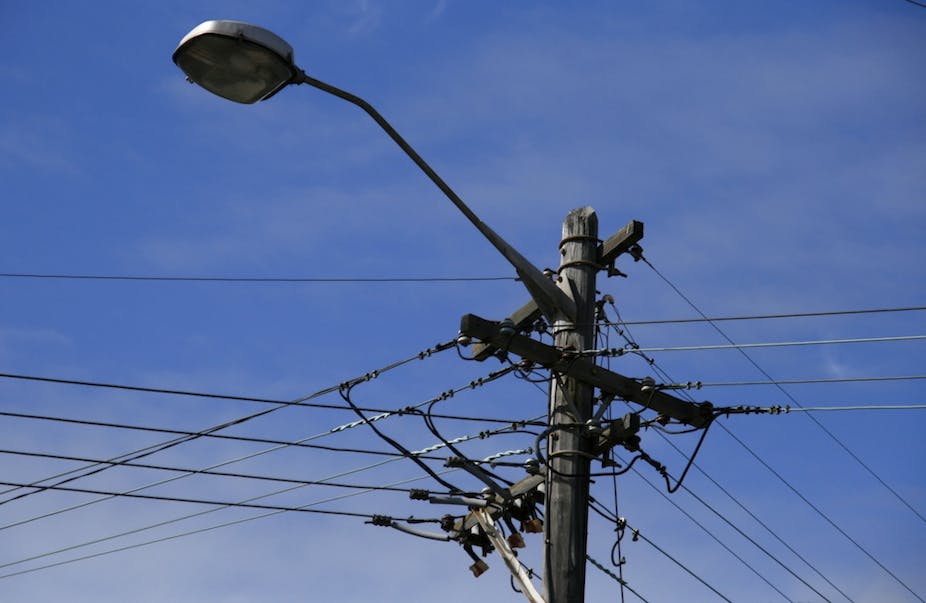Consumers have the means to lower their electricity bills by using smart meters to manage their demand, Industry Minister Ian Macfarlane has said, when releasing the government’s Energy White Paper.
Macfarlane said consumers had a role to play in containing price rises. The alternative was that present patterns of usage continued, which has led to network upgrades and massive over-capacity.
The “breakfast table conversation” had moved from petrol prices to electricity prices and the shock people had when their electricity bills arrived, he said.
“We can educate them and show how they can save money but in the end it’s their choice.
"They can either stay as they are or have a smart meter installed and lower their household electricity bill,” he said. Smart meters are mandatory in Victoria.
The white paper says that electricity prices are now moderating following sharp rises in recent years. Over 2015-16 and 2016-17 prices are expected to show modest declines or be stable in most states and territories because of subdued wholesale energy costs and lower network prices, the paper said.
Despite cost reductions from the removal of the carbon tax, gas prices are rising as they move toward parity with an international price, the paper says.
It argues that “the best way to ensure energy supply at the lowest possible cost is to build more competitive energy markets. Market structures must remove the regulations and distortions that discourage competition between suppliers, make it easier for buyers and sellers to participate, and give them access to better market information.”
Consumers are increasingly taking greater control of their energy costs, particularly electricity costs, the paper says. But more flexible tariffs, better access to information, minimising cross subsidies between consumers and providing effective price signals would also support the productive use of energy.
The government supported action to reform network tariffs, deregulate retail electricity pricing and deploy more advanced meters that will provide consumers with access to new tariffs and demand side services. “Deregulation enables innovative new business opportunities such as competitive metering and demand management services”.
The paper says the government will develop a national energy productivity plan for action in co-operation with the states and industry, covering the built environment, equipment and appliances, and vehicles.
The aim is to improve national energy productivity by up to 40% by 2030. Macfarlane said the government would continue to support the privatisation of power assets. “Privatisation of energy assets increases competition and enables more cost-effective energy supply”.
It would also announce an inquiry by the Australian Competition and Consumer Commission into the gas market in Australia. “We want to see that market operate transparently, we want consumers to be able to see how gas is being priced, where it’s available, what stocks are held.”
The paper says Australia should encourage the rapid adoption of new energy technologies, improvements in existing technologies and new energy sources where adoption would support economic growth, productivity and affordability.
But “policies should not favour one technology over another”.
Macfarlane defended the paper’s minimal reference to climate change issues, saying that was to be discussed as part of Australia’s submission to the December Paris climate conference.
He declared the government would not shift further from its 32,000 gigawatt hours offer in the negotiations for revising the renewable energy target, which leaves it a short distance from Labor.
The opposition said on Wednesday that it will accept the Clean Energy Council’s position of 33,500 gigawatt hours by 2020 to stop the loss of further jobs and investment.
“Labor will use this target as a floor and if elected, acting on the advice of the sector, will increase the RET out to 2020 to bolster investment, specifically in large scale solar,” Bill Shorten and environment spokesman Mark Butler said in a statement.
“Tony Abbott must end the uncertainty and accept the renewable energy industry’s compromise position.”
Macfarlane said he was continuing his negotiations with Senate crossbenchers over the RET target.
The white paper says that electricity produced from fossil fuels, particularly coal, is expected to continue to play a vital role in providing low cost energy around the world until the cost of renewable power becomes more competitive.
“Investment support for low emissions technology is important to Australia as a major user of coal-fired power and can aid international development efforts that help economic growth in developing countries by using coal and gas while limiting emissions.”
The Business Council of Australia said the white paper showed that reform was needed in “regulation, taxation, innovation, skills and workplaces if we want to maximise the economic and social contributions from our energy sector. Additionally, we must ensure energy and climate change policies are integrated into an overarching policy framework, to meet the dual objectives of increasing our prosperity and contributing to a global reduction in greenhouse gas emissions.”
The Climate Institute described the white paper as “a wilfully deluded document, whose recommendations sidestep the challenges and opportunities facing our energy sector in a world of cleaner, smarter energy systems”.
The paper “envisages an Australia clinging on to its old, dumb and dirty energy sector rather than driving a switch to modern, smart and clean energy,” the institute’s CEO John Connor said.
“There’s a welcome call for a national energy productivity plan, but its goal is very feeble — a 40% improvement by 2030 is not going to help us keep up when the US and other countries are aiming to double their energy productivity over the same timeframe.”

